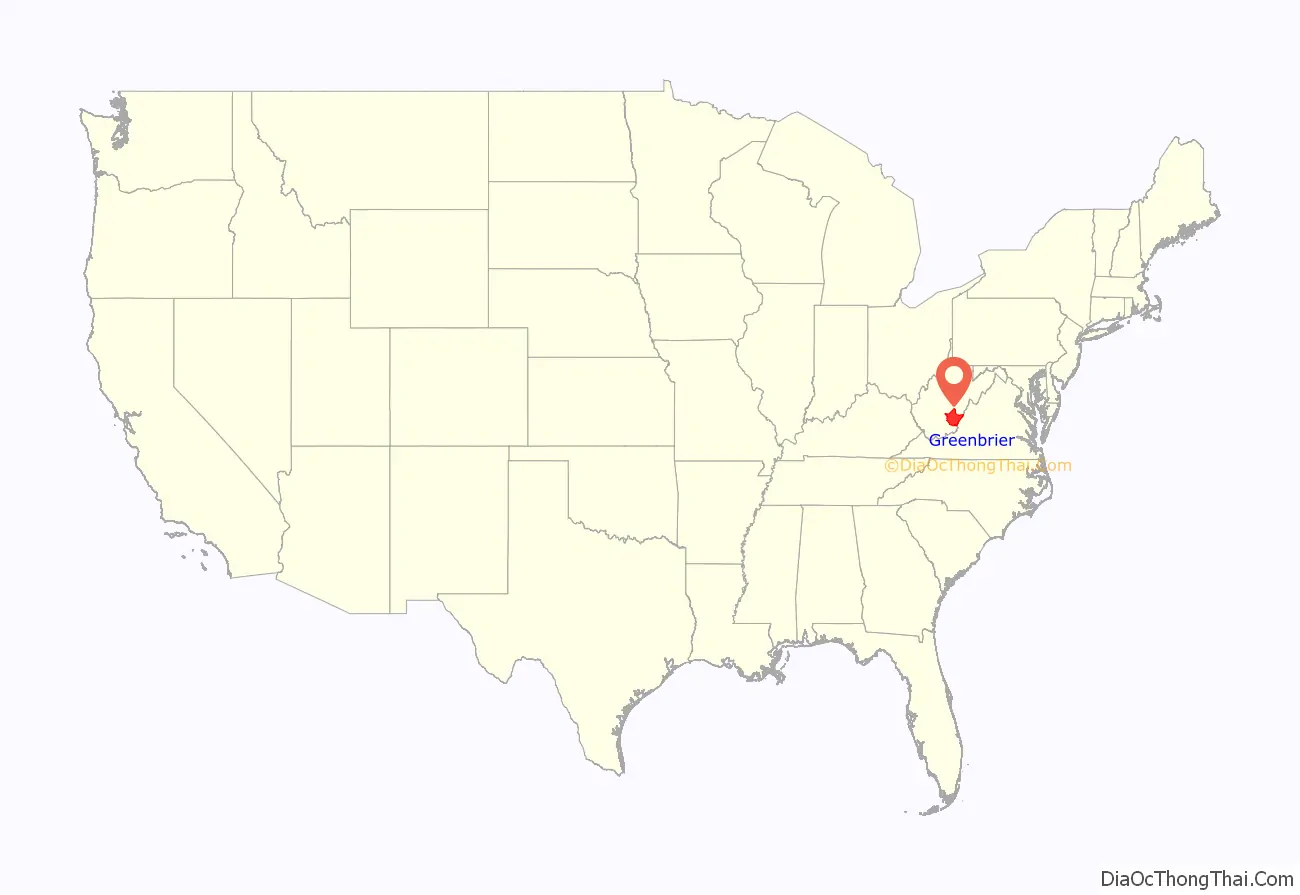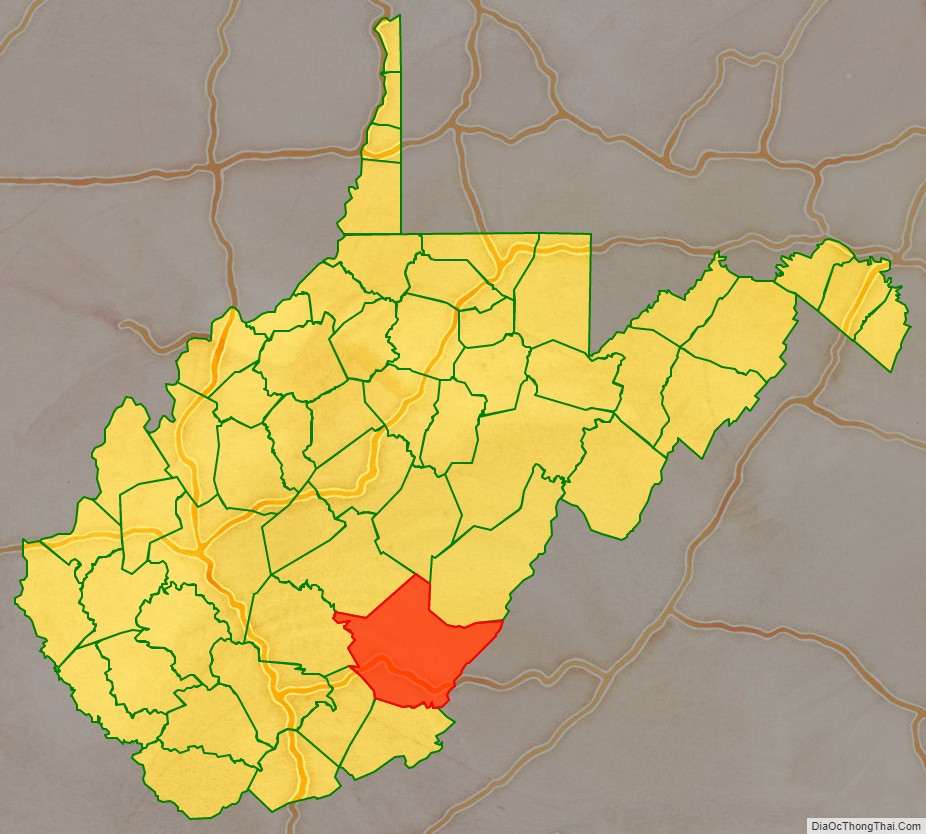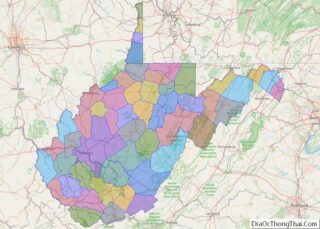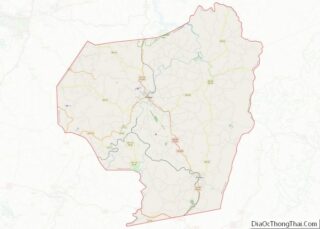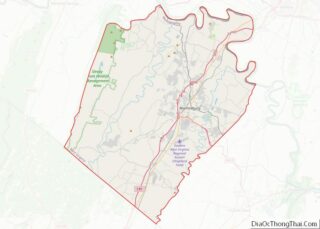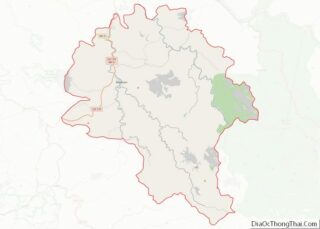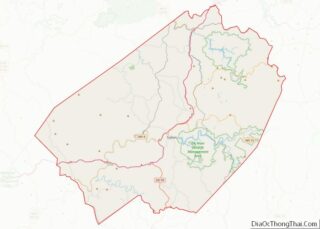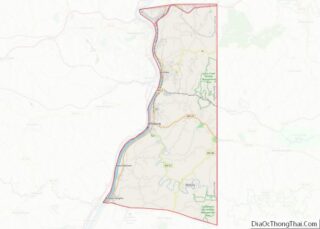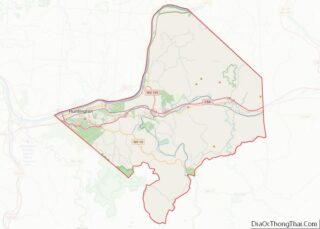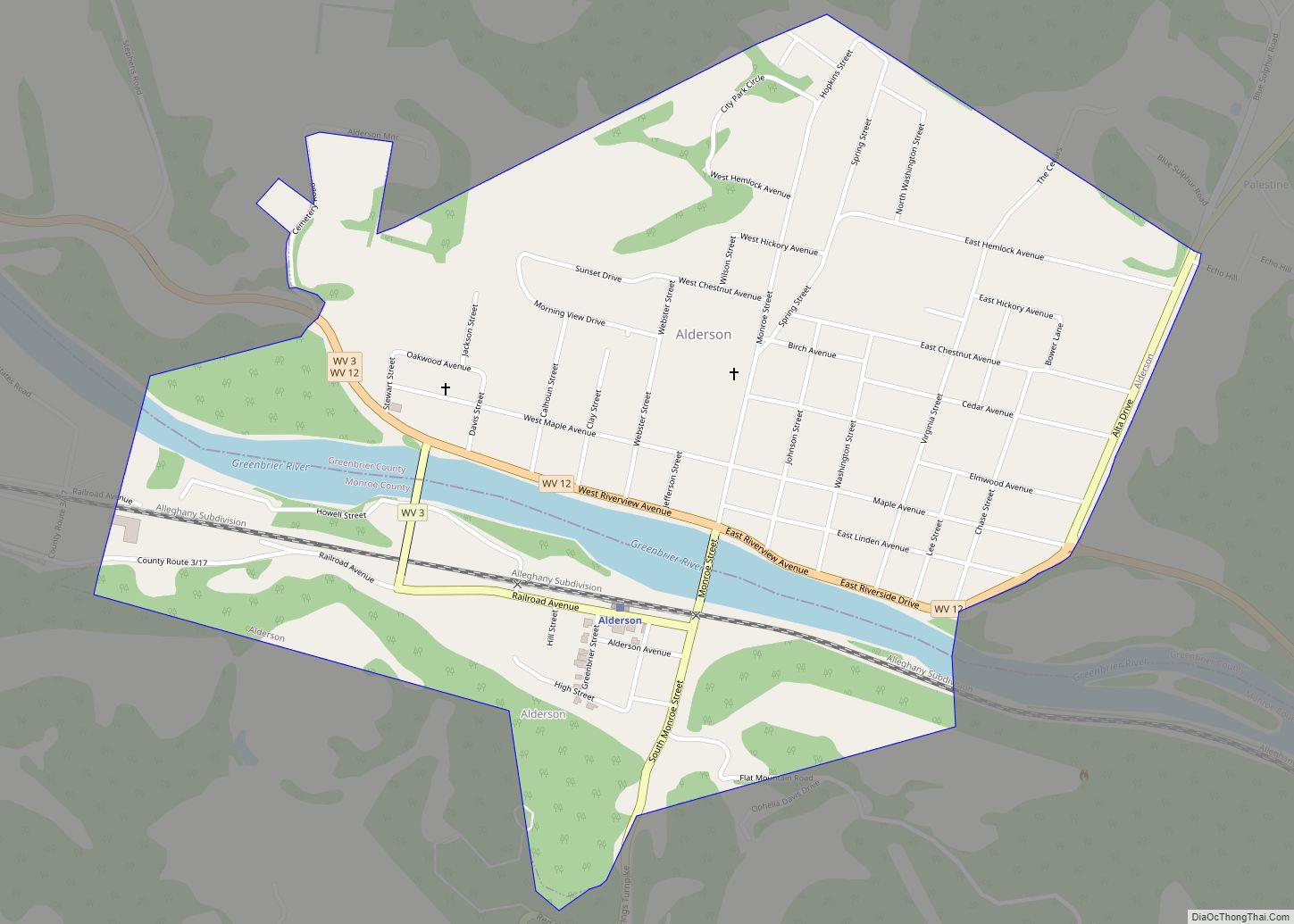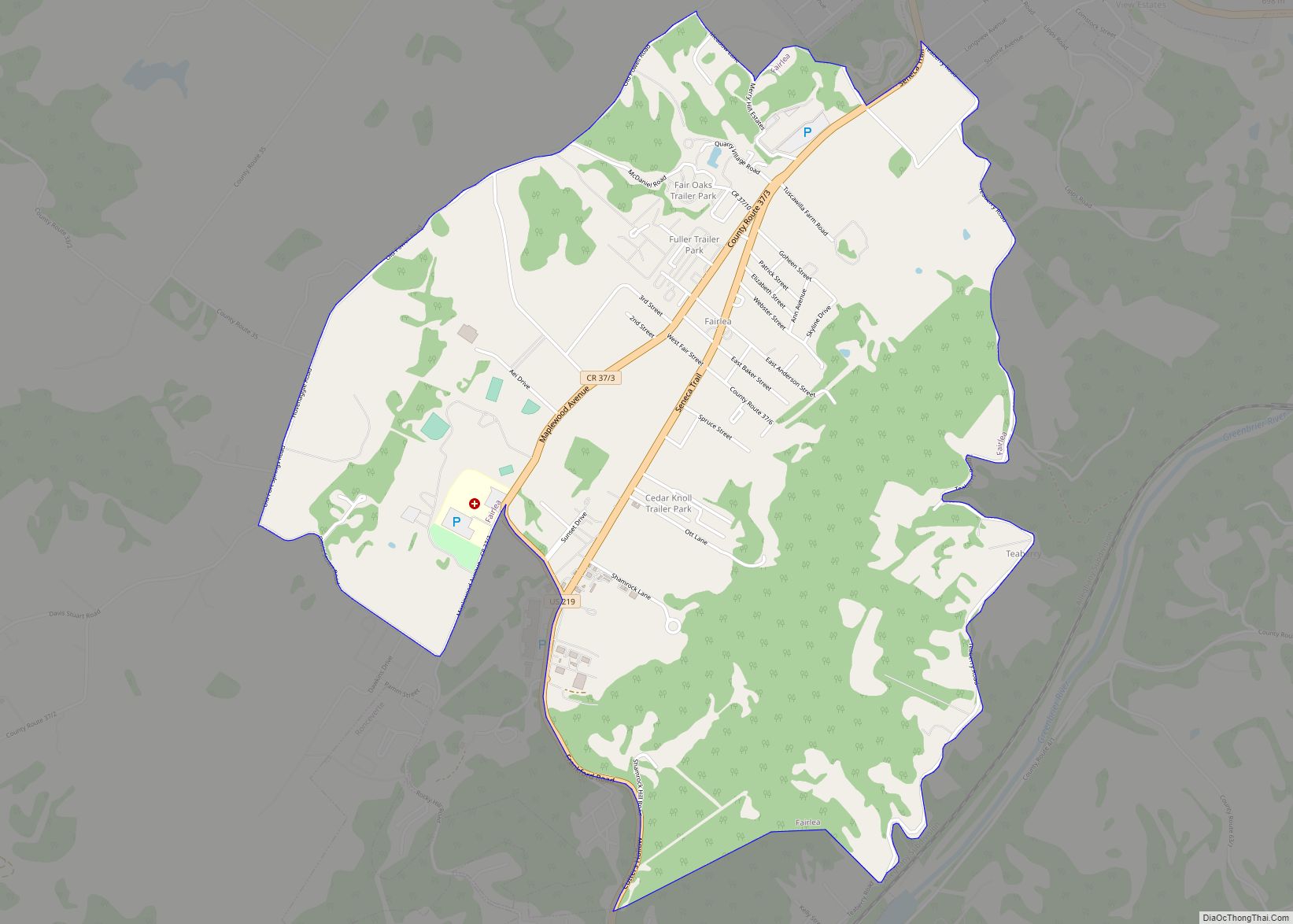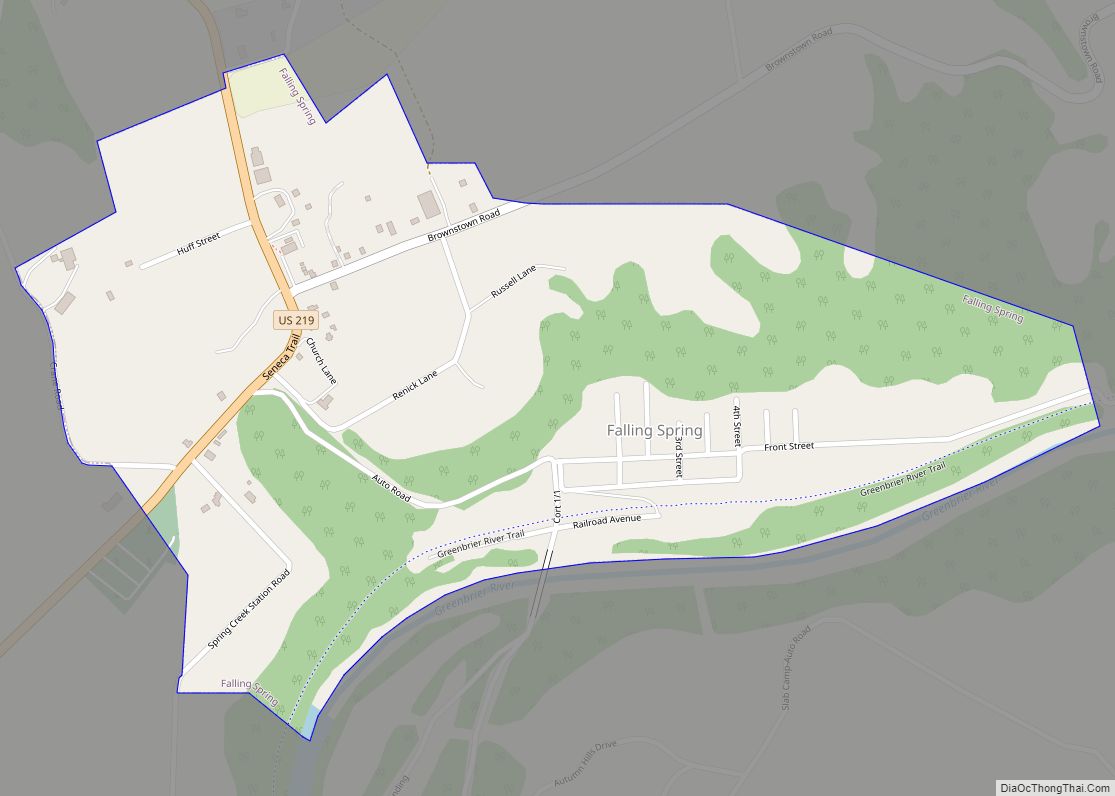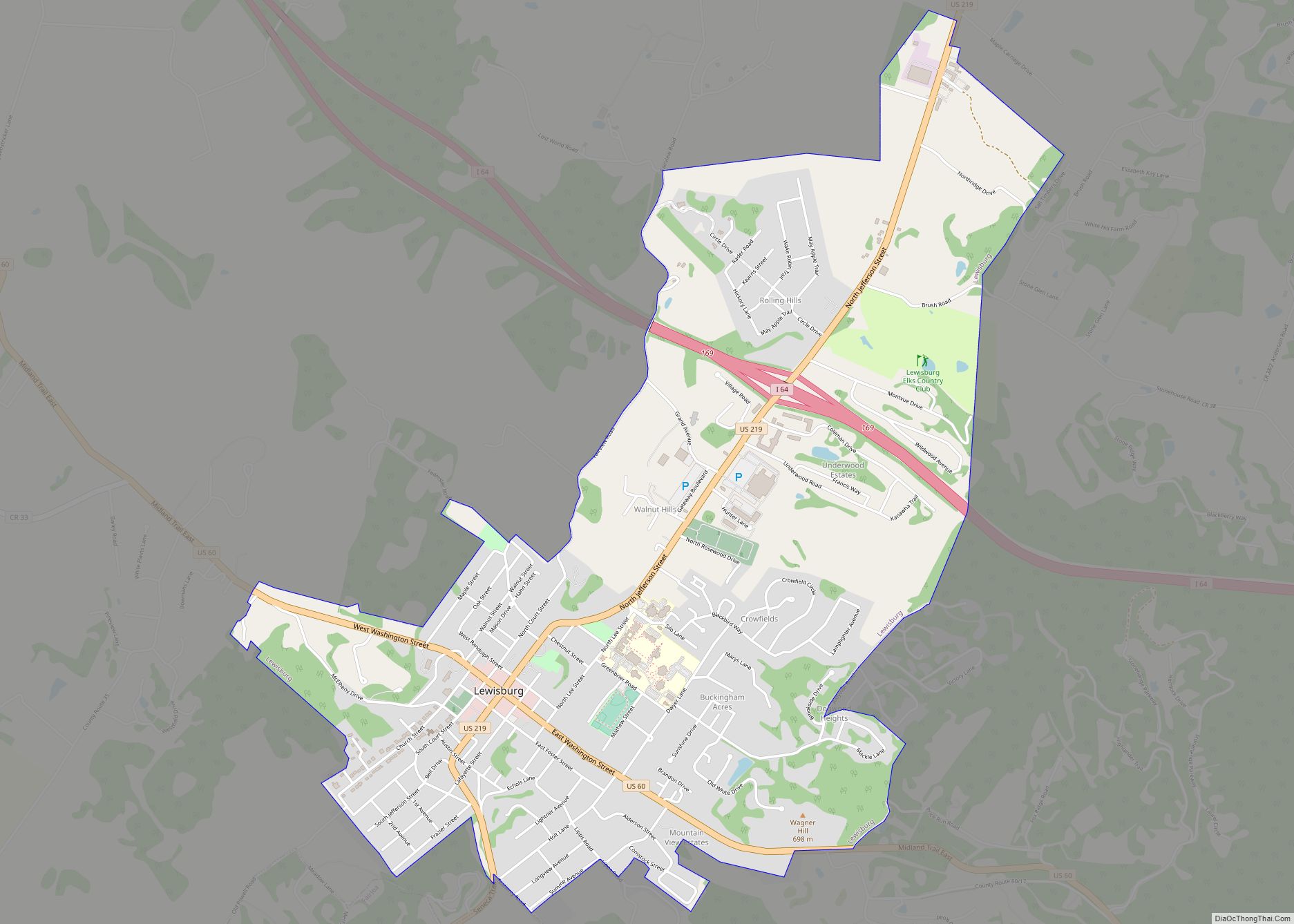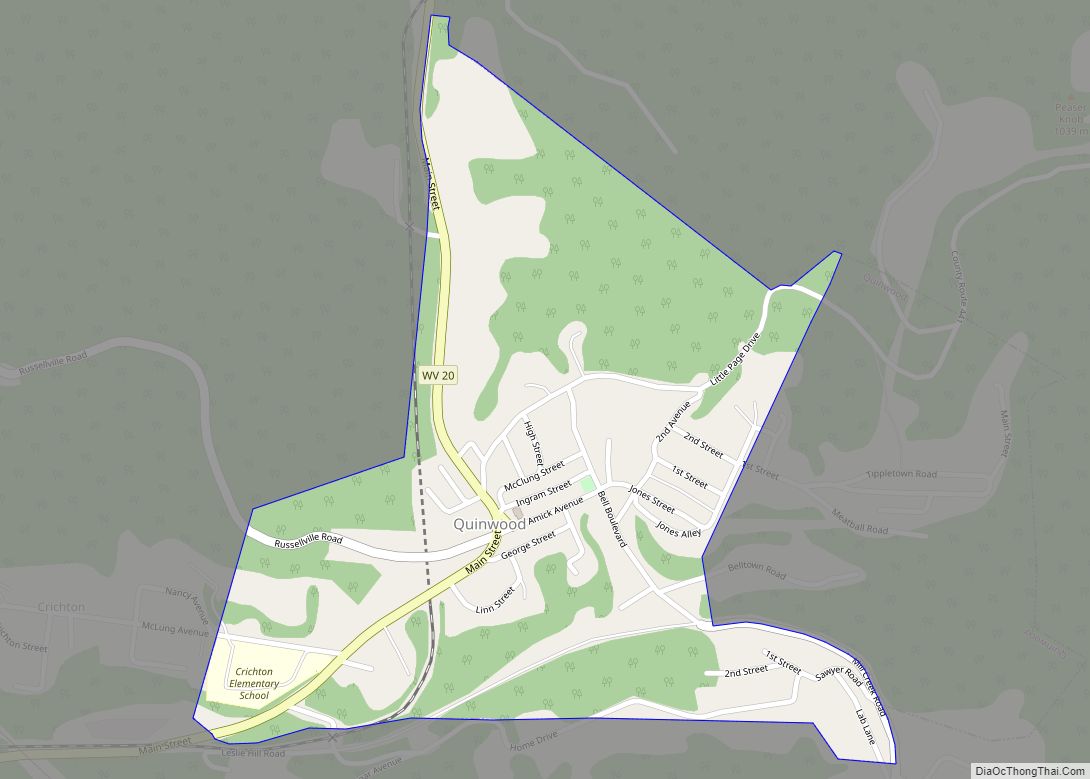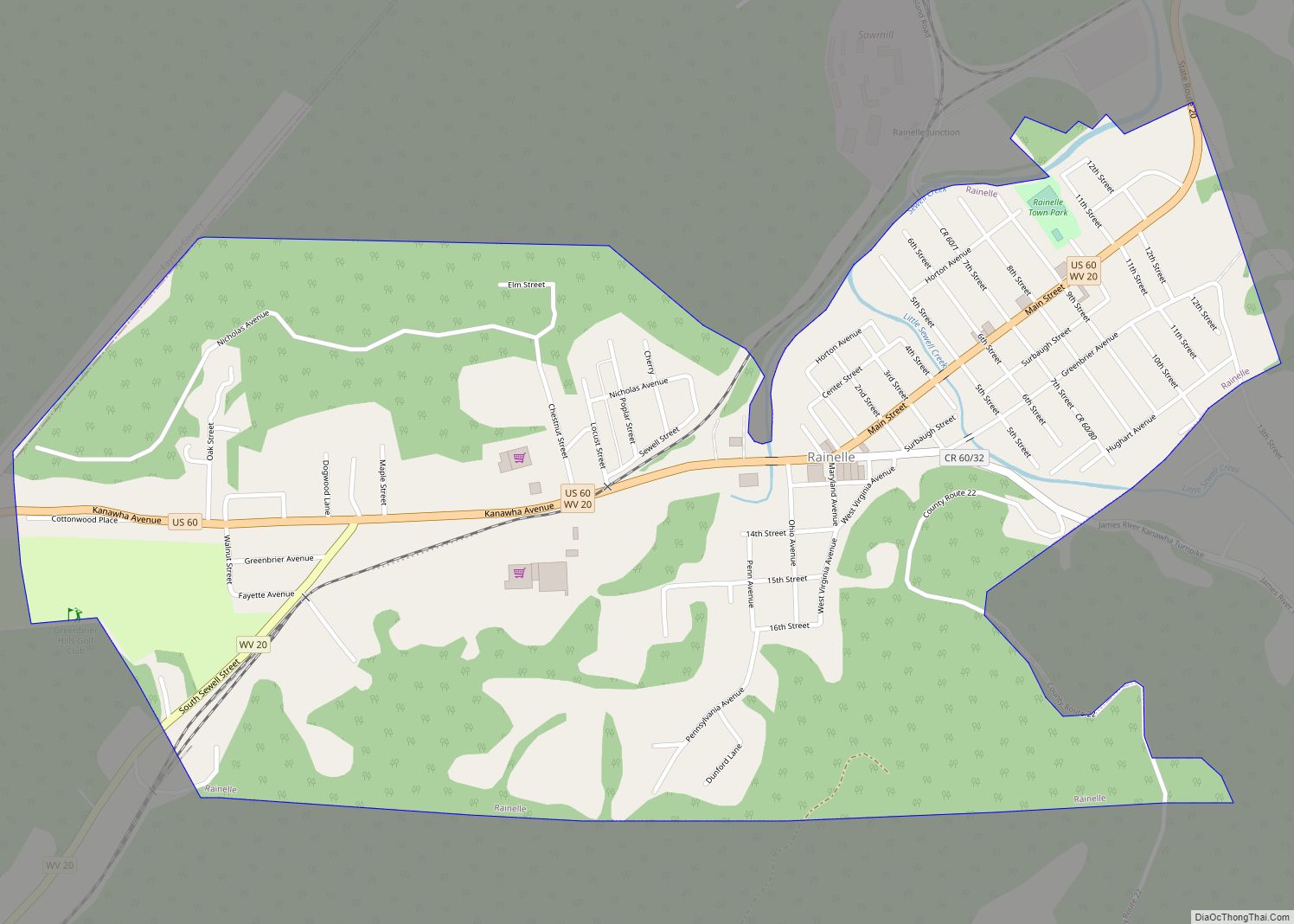Greenbrier County (/ˈɡriːnbraɪ.ər/) is a county in the U.S. state of West Virginia. As of the 2020 census, the population was 32,977. Its county seat is Lewisburg. The county was formed in 1778 from Botetourt and Montgomery counties in Virginia.
| Name: | Greenbrier County |
|---|---|
| FIPS code: | 54-025 |
| State: | West Virginia |
| Founded: | October 20, 1778 |
| Seat: | Lewisburg |
| Largest city: | Lewisburg |
| Total Area: | 1,025 sq mi (2,650 km²) |
| Land Area: | 1,020 sq mi (2,600 km²) |
| Total Population: | 32,977 |
| Population Density: | 32/sq mi (12/km²) |
Greenbrier County location map. Where is Greenbrier County?
History
Prior to the arrival of European-American settlers around 1740, Greenbrier County, like most of West Virginia, was used as a hunting ground by the Shawnee and Cherokee nations. They called this land Can-tuc-kee.
Shawnee leaders, including Pucksinwah and later his son Tecumseh, were alarmed by the arrival of the European settlers, who by 1771 had set up extensive trade in the area. The day books of early merchants Sampson and George Mathews recorded sales to the Shawnee that included such luxury items as silk, hats, silver, and tailor-made suits. Shawnee leaders feared the loss of their hunting lands, which were vital to their survival. They believed the white settlers would continue to encroach on their territory downriver on the Ohio.
Confrontations, sometimes violent, increased between the Native Americans and settlers. In 1774, the Earl of Dunmore, then governor of the colonies of New York and Virginia, decided to raise an army of 3,000 men to attack the Shawnees in their homeland in present-day Ohio. Half of these men were inducted at Fort Pitt, while the other half assembled at Fort Union under the command of General Andrew Lewis. The town of present-day Lewisburg developed around the fort and was named for that commander. By early October of that year, Lewis’ force had marched downstream to the mouth of the Kanawha River. They fought the Battle of Point Pleasant against a Shawnee force led by Hokoleskwa, also known as Cornstalk. This site later developed as the town of Point Pleasant, West Virginia.
European settlers were subjected to a number of raids by Native Americans during the colonial period, including a raid on Fort Randolph and later on Fort Donnally, then inhabited by 25 men and 60 women and children. One of the heroic defenders of Fort Donnally was an African American slave named Dick Pointer. Pointer, said to have been nearly 7 feet (2.1 m) tall, defended the log door with Philip Hamman, giving the settlers enough time to awaken and defend themselves. Pointer later addressed the Virginia General Assembly and gave a moving appeal that “in the decline of life” he requested to be freed for his defense of Fort Donnally. Historic accounts differ as to whether the legislature granted his wish. His grave is marked beside Carnegie Hall in the county seat of Lewisburg, and a historical marker stands prominently in the midst of the Lewisburg Cemetery. Pointer’s gun is on permanent display at The Greenbrier Historical Society and John A. North House Museum in Lewisburg.
During the secession crisis of 1861 Greenbrier citizens chose Samuel Price as their delegate to the Richmond convention. On April 17, 1861, the day Virginia’s secession ordinance was passed he voted against it, but later changed his mind and signed the official document. When the public vote on the secession ordinance was held on May 23, 1861, Greenbrier county voted 1,000 to 100 in favor of secession. The Civil War came to the county in mid 1861, and several battles were fought in the area, including Lewisburg in May 1862 and White Sulphur Springs in August 1863. Both battles were Union victories. Greenbrier County became part of the new state of West Virginia, although it never participated in any of the votes held by the Restored Government in Wheeling. West Virginia contributed approximately 20,000 men to the Union and an equal amount to the Confederate army, with approximately 2,000 men from Greenbrier county joining the Confederate army.
In 1863, West Virginia’s counties were divided into civil townships, with the intention of encouraging local government. This proved impractical in the heavily rural state, and in 1872 the townships were converted into magisterial districts. Greenbrier County was initially divided into ten townships: Anthony’s Creek, Big Levels, Blue Sulphur, Falling Spring, Fort Spring, Irish Corner, Lewisburg, Meadow Bluff, White Sulphur, and Williamsburg. Lewisburg District was co-extensive with the town of Lewisburg until 1871, when Big Levels Township was divided between Lewisburg and Falling Spring Townships. The same year, Summers County was formed from parts of Greenbrier, Fayette, Mercer, and Monroe Counties. The portion of Greenbrier County that became part of Summers County belonged to Blue Sulphur Township. In 1872, the nine remaining townships became magisterial districts. A tenth district, Frankford, was created from part of Falling Spring District between 1910 and 1920. In the 1990s the ten historic magisterial districts were consolidated into three new districts: Eastern, Western, and Central.
What is claimed to be the oldest golf course in the United States was founded in 1884 just north of White Sulphur Springs by the Montague family.
The famous “Greenbrier Ghost” trial occurred at Sam Black Church. Zona Heaster Shue, the wife of Edward Shue, was found dead on January 23, 1897. The coroner initially listed her cause of her death as “everlasting faint”, then as “childbirth.” Shue’s mother, Mary Jane Heaster, testified in court that her daughter’s ghost had visited her on four separate occasions, claiming that her neck had been broken by her husband, who had strangled her in a fit of rage. Shue’s body was exhumed, and based on the results of an autopsy, Edward Shue was tried and convicted of murder. A historical marker located along U.S. Route 60 at Sam Black Church describes it as the “[o]nly known case in which testimony from [a] ghost helped convict a murderer.”
During the decade prior to World War II, several Civilian Conservation Corps (CCC) camps were located along the Greenbrier River.
For most of the 20th century, the Meadow River Lumber Company operated the world’s largest hardwood sawmill in Rainelle.
During World War II The Greenbrier hotel was used as a military hospital. Sections were used as an internment center for Axis diplomats who were stranded in the United States during the war. When the war ended, the military returned the hotel to private control, and it re-opened as a hotel. During the years of the Cold War, a large underground bunker was built beneath a section of new construction at the hotel, to serve as a secret Congressional refuge in case of nuclear attack. It was one of the sites to be used as part of the United States Continuity of Operations Plan. After it was reported in a 1992 article, following the fall of the Soviet Union, the US government decommissioned it as a government site.
In the June 2016 floods that affected the state of West Virginia, Greenbrier County suffered 16 casualties, the most of any county.
Greenbrier County Road Map
Geography
According to the United States Census Bureau, the county has a total area of 1,025 square miles (2,650 km), of which 1,020 square miles (2,600 km) is land and 4.9 square miles (13 km) (0.5%) is water. It is the second-largest county in West Virginia by area.
Much of the area of the northern and western parts of the county is either public (Monongahela National Forest), coal land, or private forest, owned by companies such as MeadWestvaco and CSX.
In 2005, Invenergy, LLC of Chicago Illinois announced plans to build the $300 million, 124-turbine Beech Ridge Wind Farm along the tops of several Greenbrier County mountains. The wind farm would produce 186 megawatts of electricity. Development, which was originally expected to begin in late 2007, was stalled when the state Supreme Court agreed to hear the case brought by opponents of the project. Ultimately, The Supreme Court ruled in favor of the developers, clearing the way for construction to begin in the summer of 2009. However, in July of that year, a U.S. District Court in Maryland agreed to hear a case filed by opponents.
Adjacent counties
- Webster County (north)
- Pocahontas County (northeast)
- Bath County, Virginia (east)
- Alleghany County, Virginia (southeast)
- Monroe County (south)
- Summers County (southwest)
- Fayette County (west)
- Nicholas County (northwest)
National protected areas
- Lost World Caverns
- Monongahela National Forest (part)
- Organ Cave System
- Greenbrier State Forest
- Washington/Jefferson National Forest (WV/VA Line)
